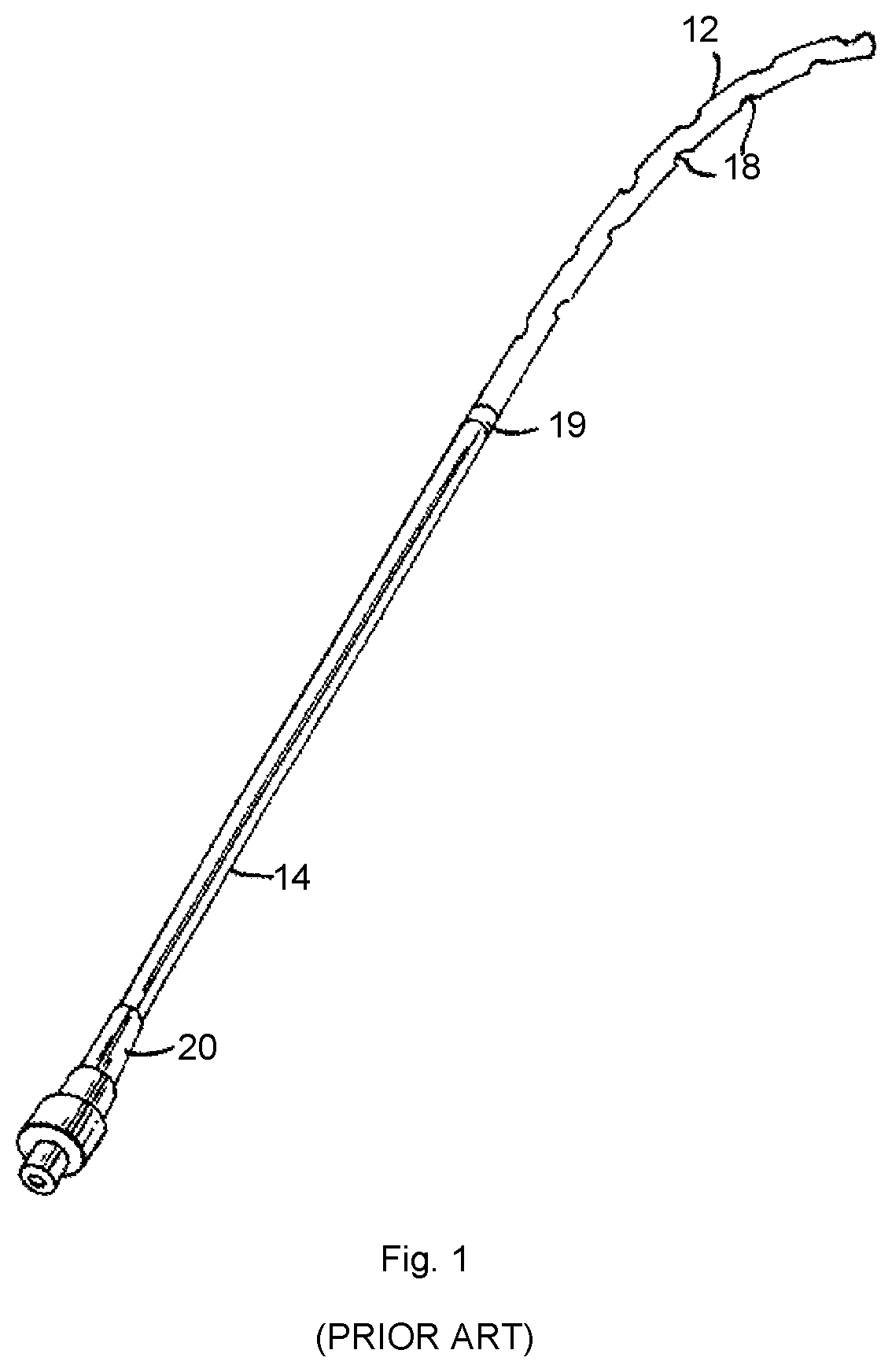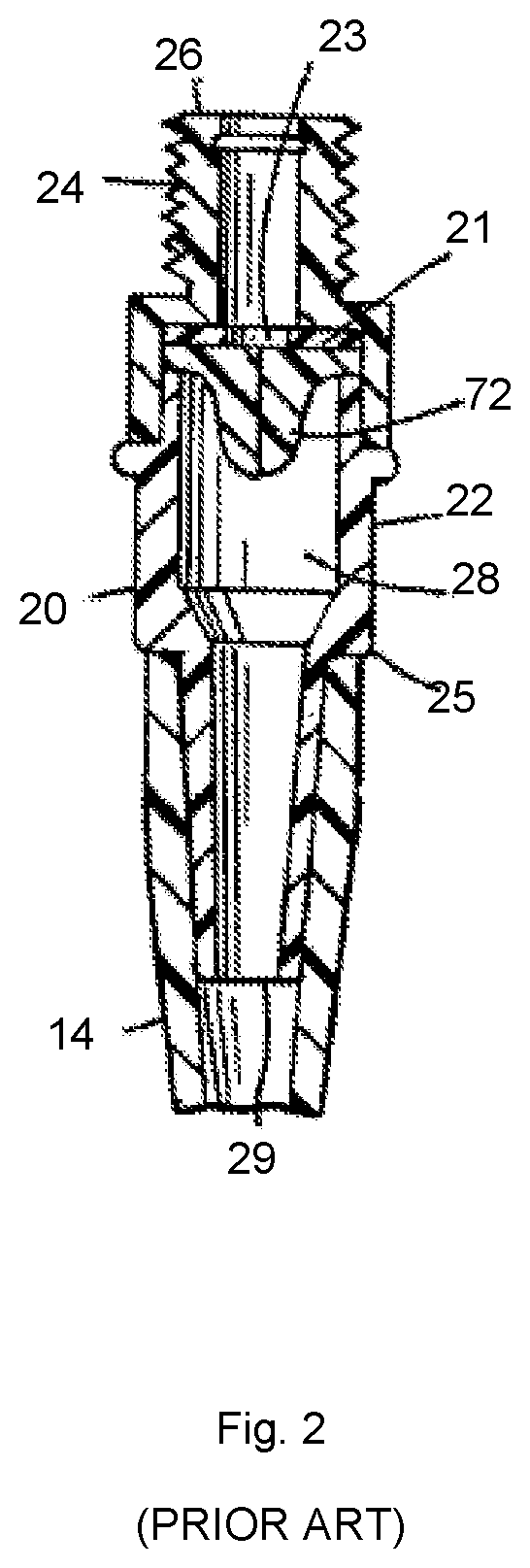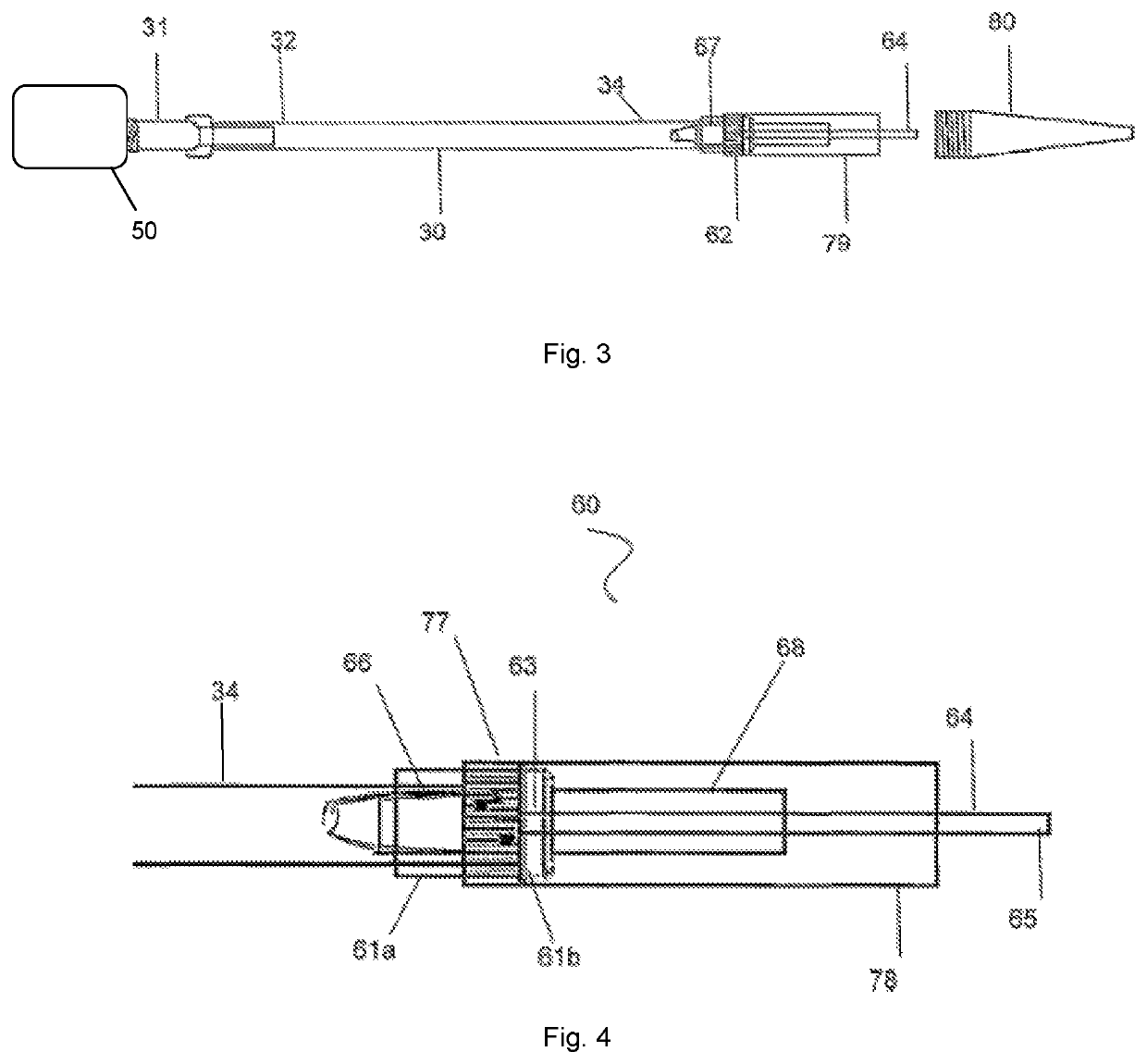Connector for catheter
a technology of connecting devices and catheters, which is applied in the direction of suction devices, intravenous devices, other medical devices, etc., can solve the problems of reducing the patient's quality of life, excessive fluid accumulation in the pleural space, and painful procedures for patients
- Summary
- Abstract
- Description
- Claims
- Application Information
AI Technical Summary
Benefits of technology
Problems solved by technology
Method used
Image
Examples
Embodiment Construction
Definitions
[0024]Unless defined otherwise, all technical and scientific terms used herein have the same meaning as commonly understood by one of ordinary skill in the art to which this invention belongs. Also, unless indicated otherwise, except within the claims, the use of “or” includes “and” and vice versa. Non-limiting terms are not to be construed as limiting unless expressly stated or the context clearly indicates otherwise (for example “including”, “having” and “comprising” typically indicate “including without limitation”). Singular forms including in the claims such as “a”, “an” and “the” include the plural reference unless expressly stated otherwise. In order to aid in the understanding and preparation of the within invention, the following illustrative, non-limiting, examples are provided.
[0025]As used in this document, the terms “proximal” and “distal” in this document is relative to the vacuum source. For example, a catheter may have distal and a proximal end. The proxim...
PUM
 Login to View More
Login to View More Abstract
Description
Claims
Application Information
 Login to View More
Login to View More - R&D
- Intellectual Property
- Life Sciences
- Materials
- Tech Scout
- Unparalleled Data Quality
- Higher Quality Content
- 60% Fewer Hallucinations
Browse by: Latest US Patents, China's latest patents, Technical Efficacy Thesaurus, Application Domain, Technology Topic, Popular Technical Reports.
© 2025 PatSnap. All rights reserved.Legal|Privacy policy|Modern Slavery Act Transparency Statement|Sitemap|About US| Contact US: help@patsnap.com



